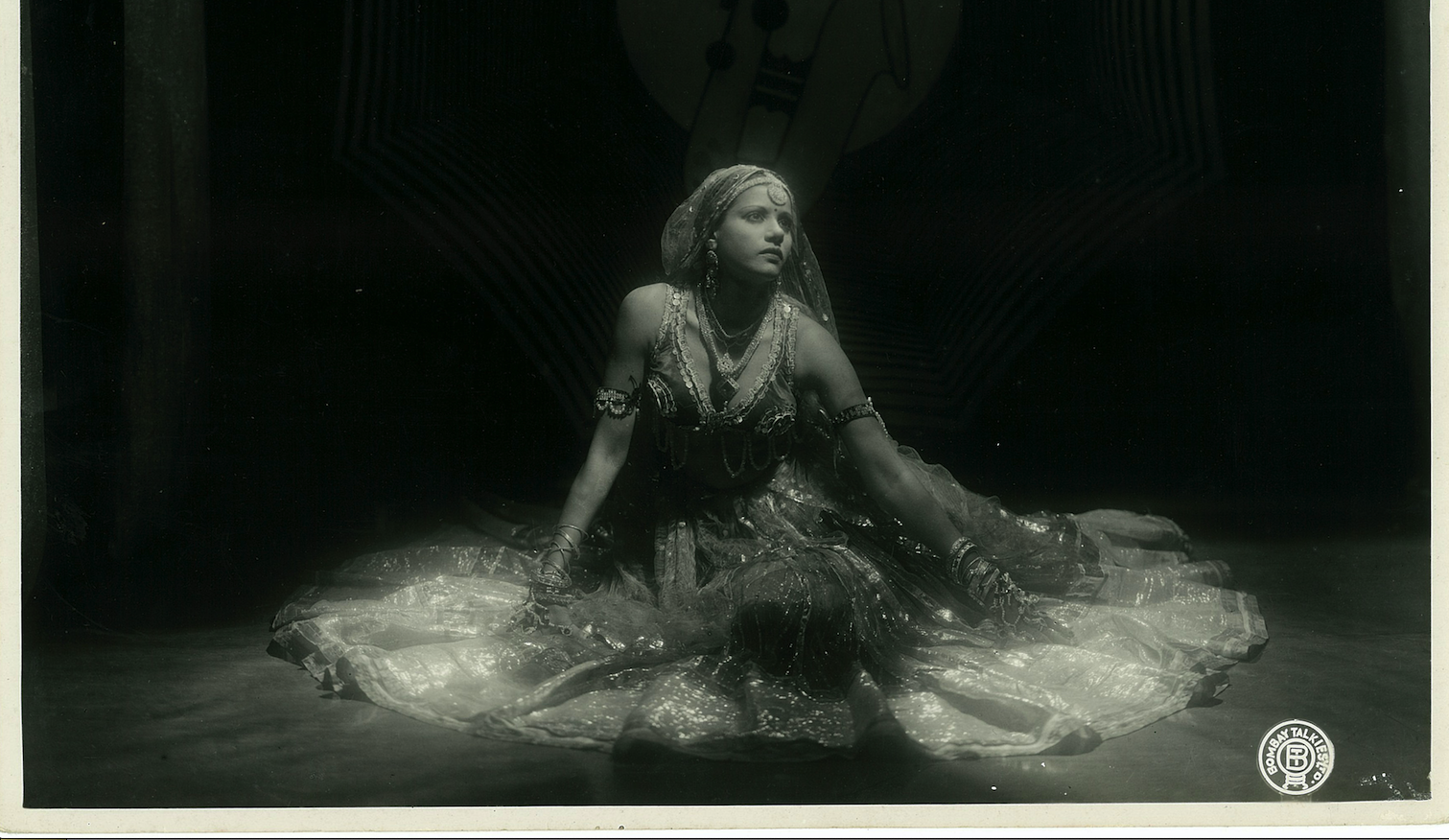
Ever since cinema became a popular medium of mass entertainment audiences have been intensely curious about life and work on a film set. How are films made, we have wondered, hoping that first-hand knowledge of a film set will explain and subdue the hold that cinema has on us. This book presents rare behind-the-scenes photographs from the personal archive of the cinematographer Josef Wirsching, a pioneer of Indian cinema. Most of these photographs were taken in the 1930s and ‘40s when Wirsching was employed at the legendary film studio, Bombay Talkies Ltd. Shot across film sets and outdoor locations they convey a world of meaning that was never intended to be projected on the silver screen.
Bombay Talkies was founded in 1934 by the husband and wife team of Himansu Rai and Devika Rani, who had previously worked in Germany. After the Nazis’ rise to power, the largest German film studios of the day were taken over for propaganda purposes, restricting the creative freedoms of filmmakers. At the same time, new sound technologies made it possible to make Indian films in Indian languages for Indian audiences. Himansu Rai and Devika Rani decided to start their own film studio in Bombay and invited their German colleagues to join them in this new artistic enterprise. Some of the biggest hits of Bombay Talkies were made by a multilingual and transnational collective including Franz Osten (director), Josef Wirsching (cinematographer), Devika Rani (actress), Niranjan Pal (writer), and Ashok Kumar (actor). The studio played a foundational role in defining India’s commercial film form, producing some of the most iconic musical films of the era.
The essays in this volume help us understand the historical and imaginative value of the photographs in the Wirsching archive. We are confronted with the fact that it is impossible to demand a superficial authenticity from the past. What is Indian about Indian cinema? How do we navigate the gap between the star image and off-screen lives of beloved actresses such as Madhubala and Meena Kumari? Can we fix a medium that moves between architecture, photography, and embodiment? As this book suggests, the past continues to surprise us as new sources emerge, showing us that history, and cinema itself, is a vital ongoing project.
Published by The Alkazi of Collection of Photography, New Delhi, and Mapin Publishing.
BOMBAY TALKIES
AN UNSEEN HISTORY OF INDIAN CINEMA
Edited by Debashree Mukherjee
The Alkazi Collection of Photography, Mapin Publishing, and The Josef Wirsching Archive
*Preview here: Online excerpt at issuu
**Buy here: amazon.com, amazon.in, Mapin
***Camera South Asia: Book launch symposium and brochure
****Podcast: Bombay Talkies book discussion on High Theory, New Books Network
CONTENTS
Foreword by Georg Wirsching
Introduction, “What Photography Can Tell Us About Cinema’s Past” • Debashree Mukherjee
“How Photography Gives an Account of Itself: The Wirsching Collection as a Nation of Photography” • Sudhir Mahadevan
“The Knot: A Scholar and An Angel Unravel Izzat (1936)” • Priya Jaikumar
“A German Eye on Indian Beauty: Josef Wirsching’s Portrayal of the Female Star in Hindi Film” • Rachel Dwyer
“Between the Studio and the World: Built Sets and Outdoor Locations in the Films of Bombay Talkies” • Debashree Mukherjee
“Re-Visioning Bombay Talkies: Restoring Parallaxes to an Image: A Conversation with Virchand Dharamsey” • Kaushik Bhaumik
“Josef Wirsching and the Kreuzer Emden: The Entangled Politics of the Interwar Period” • Eleanor Halsall